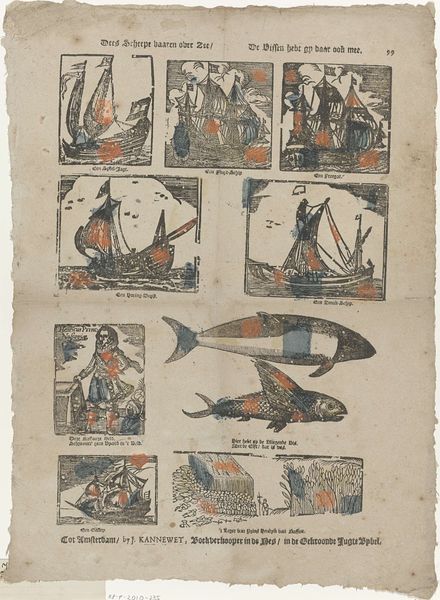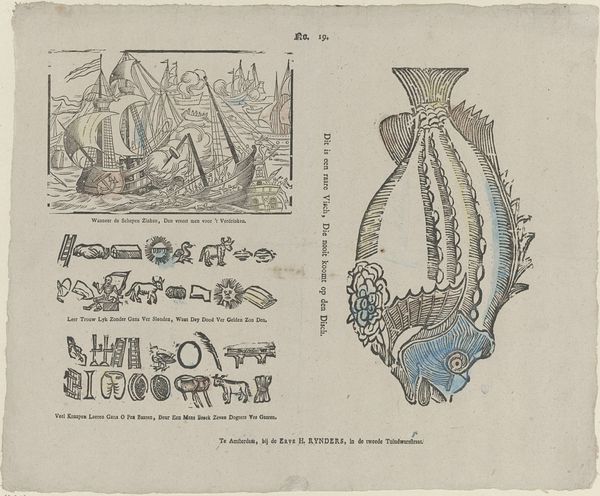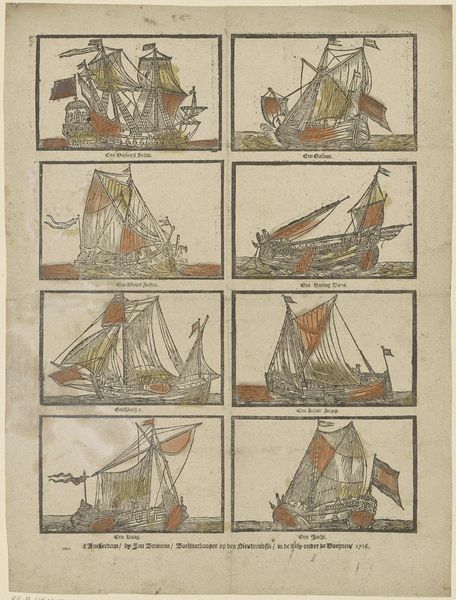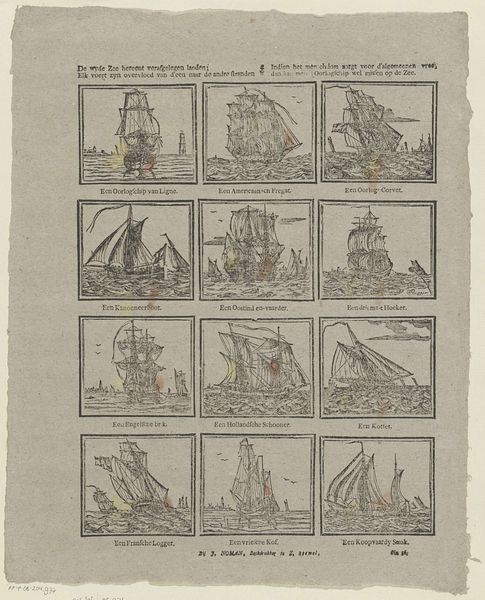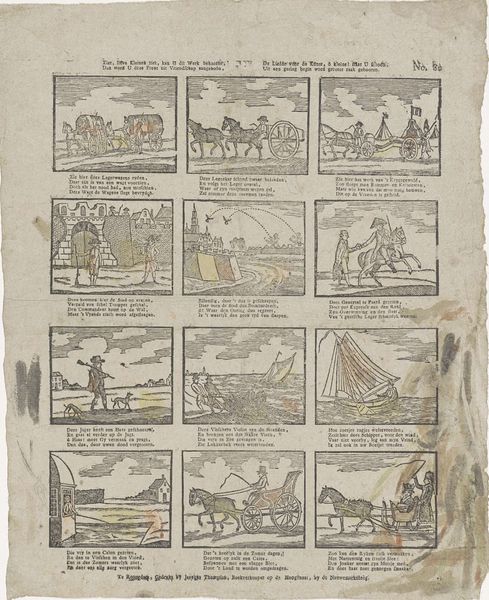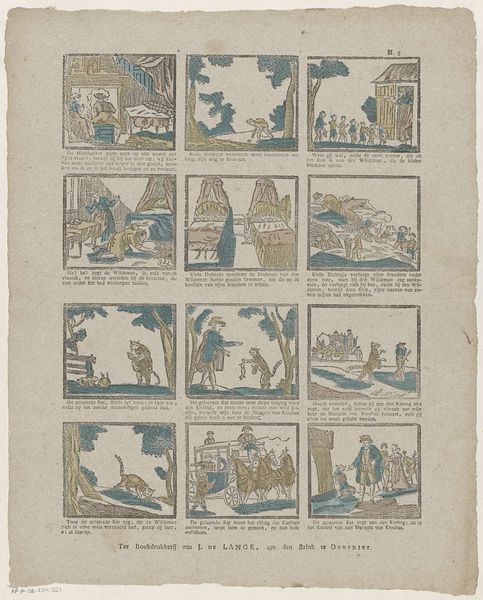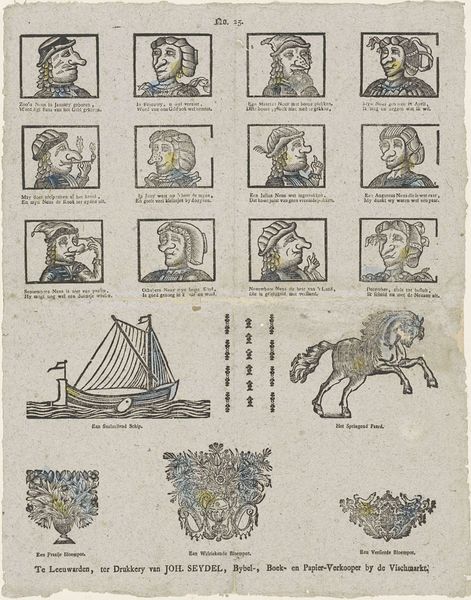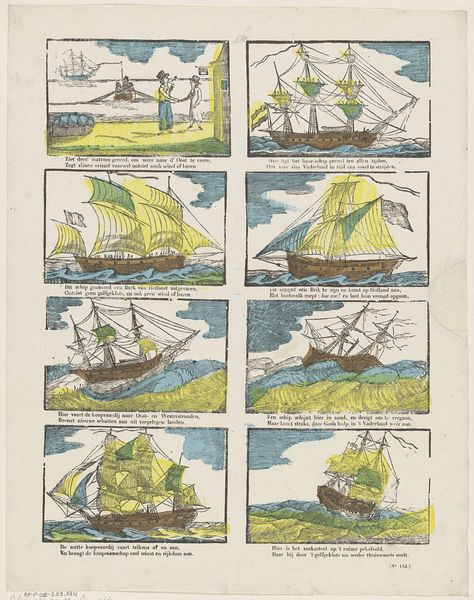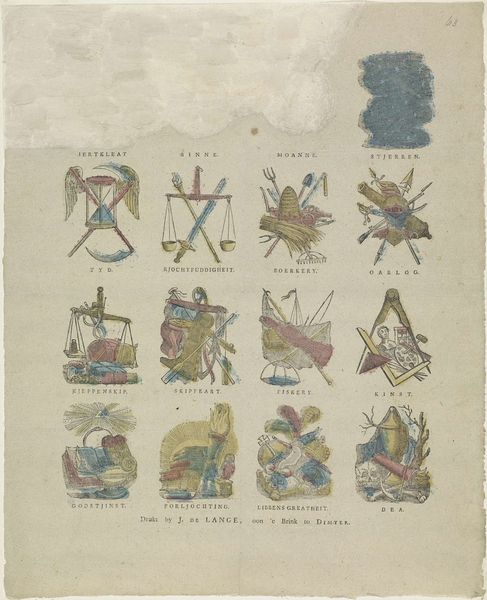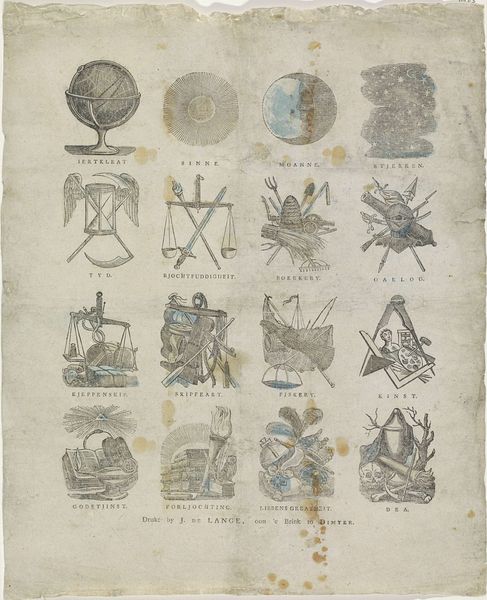
Dees scheepe vaaren over zee / de vissen hebt gij daar ook mee 1725 - 1780
0:00
0:00
print, engraving
#
aged paper
#
toned paper
#
quirky sketch
#
dutch-golden-age
# print
#
sketch book
#
landscape
#
figuration
#
personal sketchbook
#
sketchwork
#
pen-ink sketch
#
sketchbook drawing
#
genre-painting
#
storyboard and sketchbook work
#
sketchbook art
#
engraving
Dimensions: height 419 mm, width 308 mm
Copyright: Rijks Museum: Open Domain
Curator: Immediately striking is this rather whimsical feel of tiny worlds held within one frame, little narrative snippets that feel both ancient and fresh. Editor: Indeed. Here we have "Dees scheepe vaaren over zee / de vissen hebt gij daar ook mee," a print by Johannes (II) Kannewet, dating approximately from 1725 to 1780. It's currently held at the Rijksmuseum. Curator: The boats do seem to dance, don’t they? As though sprung from a child’s imagination or a vivid dream. The whole composition dances in ways both chaotic and deeply satisfying. The arrangement almost mirrors the randomness of how thoughts occur. Editor: I agree that it contains qualities both of randomness and a more subtle arrangement. It's interesting to note the grid-like structure imposed by the small panels, containing ships and sea creatures; a framework giving the scenes both order and the charm of storyboard sketches. Curator: And what’s fascinating is this dance between chaos and order mirrored in the material itself! See how the aged paper almost dictates a life of its own. What may be stains now feel crucial, even like elements added by the artist themselves, as if the passing of time joined in the artmaking. Editor: You're right, the materiality definitely contributes to its narrative. Considering the conventions of printmaking, with its reliance on reproducible images, I think it's relevant to also appreciate the individual character of this work on aged and toned paper, as its survival over centuries provides depth, meaning, and patina. Curator: Looking closely I cannot decide if the odd figure to the left is some lost self-portrait. I'm probably lost in imagining it as the cartographer charting courses of daydreams—perhaps not lost in navigation, just joyfully off course, sailing beyond all the edges... Editor: Yes, it's precisely these juxtapositions and ambiguities of both nautical precision and fairytale style that characterize the period's engagement with discovery. Kannewet successfully draws us into his world of artistry in a deceptively simple, beautifully crafted page. Curator: To know this was tucked away for hundreds of years gives the image more allure as these little scenes once whispered to some other curious eyes long ago—secrets and tales from centuries away—suddenly waking and revealed again… Editor: Absolutely. Viewing it now offers us all a rare window into the artist's vision of their world, so dynamically alive after all these years.
Comments
No comments
Be the first to comment and join the conversation on the ultimate creative platform.
